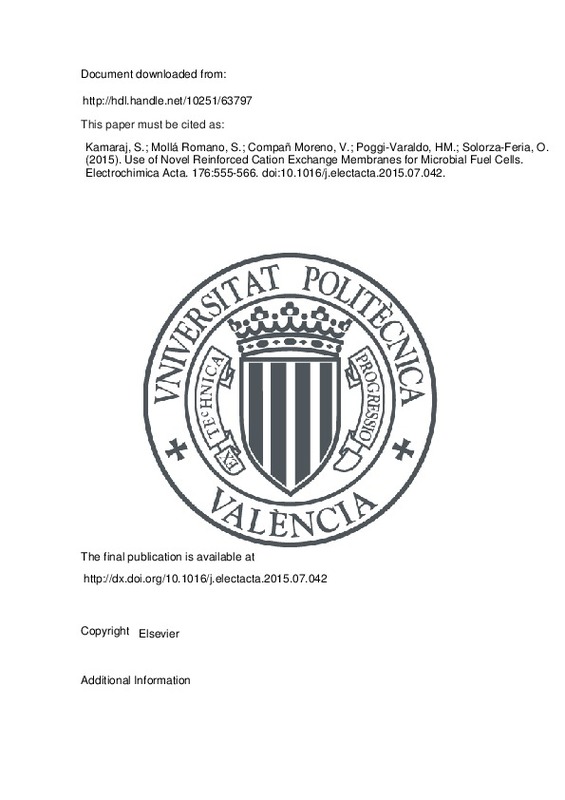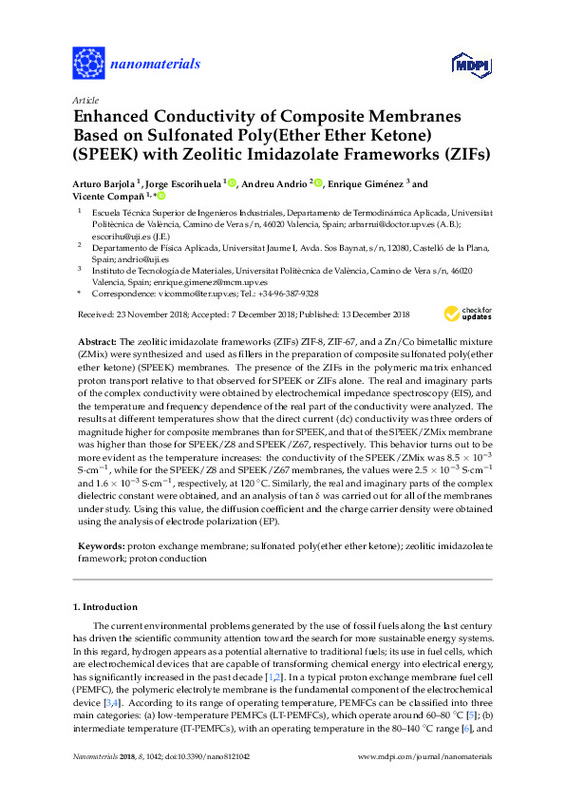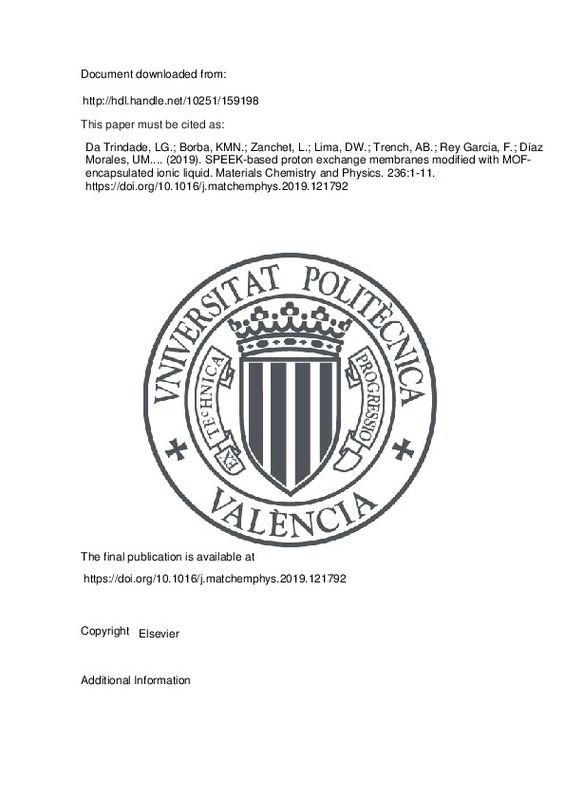JavaScript is disabled for your browser. Some features of this site may not work without it.
Buscar en RiuNet
Listar
Mi cuenta
Estadísticas
Ayuda RiuNet
Admin. UPV
Azo dyes functionalized with alkoxysilyl ethers as chemodosimeters for the chromogenic detection of the fluoride anion
Mostrar el registro sencillo del ítem
Ficheros en el ítem
| dc.contributor.author | Agostini, Alessandro
|
es_ES |
| dc.contributor.author | Milani, Michele
|
es_ES |
| dc.contributor.author | Martínez Mañez, Ramón
|
es_ES |
| dc.contributor.author | Licchelli, Maurizio
|
es_ES |
| dc.contributor.author | Soto Camino, Juan
|
es_ES |
| dc.contributor.author | Sancenón Galarza, Félix
|
es_ES |
| dc.date.accessioned | 2013-11-28T12:19:35Z | |
| dc.date.issued | 2012-09 | |
| dc.identifier.issn | 1861-4728 | |
| dc.identifier.uri | http://hdl.handle.net/10251/34128 | |
| dc.description.abstract | Finding fluoride: An azo dye functionalized with tert-butyldimethylsilyl ether has been synthesized and used as a selective chromogenic fluoride sensor in the acetonitrile/water mixtures. The chromogenic response arises from the fluoride-induced hydrolysis of the silyl ether moiety, which yields a highly colored phenolate anion. The sensor molecule can be grafted to silica to make dip-sticks for fluoride sensing. Copyright © 2012 WILEY-VCH Verlag GmbH & Co. KGaA, Weinheim. | es_ES |
| dc.description.sponsorship | The authors thank the Spanish Government (project MAT2009-14564-C04), the Generalitat Valenciana (project PROMETEO/2009/016) and the CIBER-BBN for their support. A.A. also thanks the Generalitat Valenciana for his Santiago Grisolia fellowship. | en_EN |
| dc.format.extent | 5 | es_ES |
| dc.language | Inglés | es_ES |
| dc.publisher | Wiley-VCH Verlag | es_ES |
| dc.relation.ispartof | Chemistry - An Asian Journal | es_ES |
| dc.rights | Reserva de todos los derechos | es_ES |
| dc.subject | Fluorides | es_ES |
| dc.subject | Hydrolysis | es_ES |
| dc.subject | Sensors | es_ES |
| dc.subject | Silyl ether | es_ES |
| dc.subject | Chemodosimeters | es_ES |
| dc.subject | Fluoride anions | es_ES |
| dc.subject | Functionalized | es_ES |
| dc.subject | Sensor molecules | es_ES |
| dc.subject | Silyl ethers | es_ES |
| dc.subject | Tert-butyldimethylsilyl | es_ES |
| dc.subject | Azo dyes | es_ES |
| dc.subject | Fluorine compounds | es_ES |
| dc.subject | Organic compounds | es_ES |
| dc.subject | Phenols | es_ES |
| dc.subject | Silica | es_ES |
| dc.subject | Ethers | es_ES |
| dc.subject | Acetonitrile | es_ES |
| dc.subject | Acetonitrile derivative | es_ES |
| dc.subject | Anion | es_ES |
| dc.subject | Azo compound | es_ES |
| dc.subject | Coloring agent | es_ES |
| dc.subject | Ether derivative | es_ES |
| dc.subject | Fluoride | es_ES |
| dc.subject | Organosilicon derivative | es_ES |
| dc.subject | T butyldimethylsilyl compounds | es_ES |
| dc.subject | T-butyldimethylsilyl compounds | es_ES |
| dc.subject | Water | es_ES |
| dc.subject | Article | es_ES |
| dc.subject | Chemistry | es_ES |
| dc.subject | Colorimetry | es_ES |
| dc.subject | Acetonitriles | es_ES |
| dc.subject | Anions | es_ES |
| dc.subject | Azo Compounds | es_ES |
| dc.subject | Coloring Agents | es_ES |
| dc.subject | Organosilicon Compounds | es_ES |
| dc.subject.classification | QUIMICA INORGANICA | es_ES |
| dc.subject.classification | QUIMICA ORGANICA | es_ES |
| dc.title | Azo dyes functionalized with alkoxysilyl ethers as chemodosimeters for the chromogenic detection of the fluoride anion | es_ES |
| dc.type | Artículo | es_ES |
| dc.embargo.lift | 10000-01-01 | |
| dc.embargo.terms | forever | es_ES |
| dc.identifier.doi | 10.1002/asia.201200323 | |
| dc.relation.projectID | info:eu-repo/grantAgreement/MICINN//MAT2009-14564-C04/ | es_ES |
| dc.relation.projectID | info:eu-repo/grantAgreement/Generalitat Valenciana//PROMETEO09%2F2009%2F016/ES/Ayuda prometeo 2009 para el grupo de diseño y desarrollo de sensores/ | es_ES |
| dc.rights.accessRights | Cerrado | es_ES |
| dc.contributor.affiliation | Universitat Politècnica de València. Instituto de Reconocimiento Molecular y Desarrollo Tecnológico - Institut de Reconeixement Molecular i Desenvolupament Tecnològic | es_ES |
| dc.contributor.affiliation | Universitat Politècnica de València. Departamento de Química - Departament de Química | es_ES |
| dc.description.bibliographicCitation | Agostini, A.; Milani, M.; Martínez Mañez, R.; Licchelli, M.; Soto Camino, J.; Sancenón Galarza, F. (2012). Azo dyes functionalized with alkoxysilyl ethers as chemodosimeters for the chromogenic detection of the fluoride anion. Chemistry - An Asian Journal. 7:2040-2044. https://doi.org/10.1002/asia.201200323 | es_ES |
| dc.description.accrualMethod | S | es_ES |
| dc.relation.publisherversion | http://dx.doi.org/10.1002/asia.201200323 | es_ES |
| dc.description.upvformatpinicio | 2040 | es_ES |
| dc.description.upvformatpfin | 2044 | es_ES |
| dc.type.version | info:eu-repo/semantics/publishedVersion | es_ES |
| dc.description.volume | 7 | es_ES |
| dc.relation.senia | 230306 | |
| dc.contributor.funder | Generalitat Valenciana | es_ES |
| dc.contributor.funder | Ministerio de Ciencia e Innovación | es_ES |
| dc.contributor.funder | Centro de Investigación Biomédica en Red en Bioingeniería, Biomateriales y Nanomedicina | es_ES |
| dc.description.references | Beer, P. D., & Gale, P. A. (2001). Erkennung und Nachweis von Anionen: gegenwärtiger Stand und Perspektiven. Angewandte Chemie, 113(3), 502-532. doi:10.1002/1521-3757(20010202)113:3<502::aid-ange502>3.0.co;2-a | es_ES |
| dc.description.references | Beer, P. D., & Gale, P. A. (2001). Anion Recognition and Sensing: The State of the Art and Future Perspectives. Angewandte Chemie International Edition, 40(3), 486-516. doi:10.1002/1521-3773(20010202)40:3<486::aid-anie486>3.0.co;2-p | es_ES |
| dc.description.references | Kleerekoper, M. (1998). THE ROLE OF FLUORIDE IN THE PREVENTION OF OSTEOPOROSIS. Endocrinology and Metabolism Clinics of North America, 27(2), 441-452. doi:10.1016/s0889-8529(05)70015-3 | es_ES |
| dc.description.references | Gale, P. A., García-Garrido, S. E., & Garric, J. (2008). Anion receptors based on organic frameworks: highlights from 2005 and 2006. Chem. Soc. Rev., 37(1), 151-190. doi:10.1039/b715825d | es_ES |
| dc.description.references | Martínez-Máñez, R., & Sancenón, F. (2003). Fluorogenic and Chromogenic Chemosensors and Reagents for Anions. Chemical Reviews, 103(11), 4419-4476. doi:10.1021/cr010421e | es_ES |
| dc.description.references | Moragues, M. E., Martínez-Máñez, R., & Sancenón, F. (2011). Chromogenic and fluorogenic chemosensors and reagents for anions. A comprehensive review of the year 2009. Chemical Society Reviews, 40(5), 2593. doi:10.1039/c0cs00015a | es_ES |
| dc.description.references | Yoon, J., Kim, S. K., Singh, N. J., & Kim, K. S. (2006). Imidazolium receptors for the recognition of anions. Chemical Society Reviews, 35(4), 355. doi:10.1039/b513733k | es_ES |
| dc.description.references | Steed, J. W. (2009). Coordination and organometallic compounds as anion receptors and sensors. Chem. Soc. Rev., 38(2), 506-519. doi:10.1039/b810364j | es_ES |
| dc.description.references | Caltagirone, C., & Gale, P. A. (2009). Anion receptor chemistry: highlights from 2007. Chem. Soc. Rev., 38(2), 520-563. doi:10.1039/b806422a | es_ES |
| dc.description.references | Gale, P. A., & Quesada, R. (2006). Anion coordination and anion-templated assembly: Highlights from 2002 to 2004. Coordination Chemistry Reviews, 250(23-24), 3219-3244. doi:10.1016/j.ccr.2006.05.020 | es_ES |
| dc.description.references | Amendola, V., Bonizzoni, M., Esteban-Gómez, D., Fabbrizzi, L., Licchelli, M., Sancenón, F., & Taglietti, A. (2006). Some guidelines for the design of anion receptors. Coordination Chemistry Reviews, 250(11-12), 1451-1470. doi:10.1016/j.ccr.2006.01.006 | es_ES |
| dc.description.references | Lee, J. Y., Cho, E. J., Mukamel, S., & Nam, K. C. (2004). Efficient Fluoride-Selective Fluorescent Host: Experiment and Theory†. The Journal of Organic Chemistry, 69(3), 943-950. doi:10.1021/jo0356457 | es_ES |
| dc.description.references | Zhao, C.-H., Sakuda, E., Wakamiya, A., & Yamaguchi, S. (2009). Highly Emissive Diborylphenylene-Containing Bis(phenylethynyl)benzenes: Structure-Photophysical Property Correlations and Fluoride Ion Sensing. Chemistry - A European Journal, 15(40), 10603-10612. doi:10.1002/chem.200900864 | es_ES |
| dc.description.references | Lu, Q.-S., Dong, L., Zhang, J., Li, J., Jiang, L., Huang, Y., … Yu, X.-Q. (2009). Imidazolium-Functionalized BINOL as a Multifunctional Receptor for Chromogenic and Chiral Anion Recognition. Organic Letters, 11(3), 669-672. doi:10.1021/ol8027303 | es_ES |
| dc.description.references | Mizuno, T., Wei, W.-H., Eller, L. R., & Sessler, J. L. (2002). Phenanthroline Complexes Bearing Fused Dipyrrolylquinoxaline Anion Recognition Sites: Efficient Fluoride Anion Receptors. Journal of the American Chemical Society, 124(7), 1134-1135. doi:10.1021/ja017298t | es_ES |
| dc.description.references | Hudnall, T. W., Chiu, C.-W., & Gabbaï, F. P. (2009). Fluoride Ion Recognition by Chelating and Cationic Boranes. Accounts of Chemical Research, 42(2), 388-397. doi:10.1021/ar8001816 | es_ES |
| dc.description.references | Rochat, S., & Severin, K. (2011). A simple fluorescence assay for the detection of fluoride in water at neutral pH. Chemical Communications, 47(15), 4391. doi:10.1039/c1cc10498e | es_ES |
| dc.description.references | Rajamalli, P., & Prasad, E. (2011). Low Molecular Weight Fluorescent Organogel for Fluoride Ion Detection. Organic Letters, 13(14), 3714-3717. doi:10.1021/ol201325j | es_ES |
| dc.description.references | Amendola, V., Esteban-Gómez, D., Fabbrizzi, L., & Licchelli, M. (2006). What Anions Do to N−H-Containing Receptors. Accounts of Chemical Research, 39(5), 343-353. doi:10.1021/ar050195l | es_ES |
| dc.description.references | Boiocchi, M., Del Boca, L., Gómez, D. E., Fabbrizzi, L., Licchelli, M., & Monzani, E. (2004). Nature of Urea−Fluoride Interaction: Incipient and Definitive Proton Transfer. Journal of the American Chemical Society, 126(50), 16507-16514. doi:10.1021/ja045936c | es_ES |
| dc.description.references | Esteban-Gómez, D., Fabbrizzi, L., & Licchelli, M. (2005). Why, on Interaction of Urea-Based Receptors with Fluoride, Beautiful Colors Develop. The Journal of Organic Chemistry, 70(14), 5717-5720. doi:10.1021/jo050528s | es_ES |
| dc.description.references | Kim, S. Y., & Hong, J.-I. (2007). Chromogenic and Fluorescent Chemodosimeter for Detection of Fluoride in Aqueous Solution. Organic Letters, 9(16), 3109-3112. doi:10.1021/ol0711873 | es_ES |
| dc.description.references | Kim, T.-H., & Swager, T. M. (2003). A Fluorescent Self-Amplifying Wavelength-Responsive Sensory Polymer for Fluoride Ions. Angewandte Chemie, 115(39), 4951-4954. doi:10.1002/ange.200352075 | es_ES |
| dc.description.references | Kim, T.-H., & Swager, T. M. (2003). A Fluorescent Self-Amplifying Wavelength-Responsive Sensory Polymer for Fluoride Ions. Angewandte Chemie International Edition, 42(39), 4803-4806. doi:10.1002/anie.200352075 | es_ES |
| dc.description.references | Jiang, X., Vieweger, M. C., Bollinger, J. C., Dragnea, B., & Lee, D. (2007). Reactivity-Based Fluoride Detection: Evolving Design Principles for Spring-Loaded Turn-On Fluorescent Probes. Organic Letters, 9(18), 3579-3582. doi:10.1021/ol7014187 | es_ES |
| dc.description.references | Yang, X.-F. (2007). Novel fluorogenic probe for fluoride ion based on the fluoride-induced cleavage of tert-butyldimethylsilyl ether. Spectrochimica Acta Part A: Molecular and Biomolecular Spectroscopy, 67(2), 321-326. doi:10.1016/j.saa.2006.07.020 | es_ES |
| dc.description.references | Yang, X.-F., Ye, S.-J., Bai, Q., & Wang, X.-Q. (2006). A Fluorescein-based Fluorogenic Probe for Fluoride Ion Based on the Fluoride-induced Cleavage of tert-butyldimethylsilyl Ether. Journal of Fluorescence, 17(1), 81-87. doi:10.1007/s10895-006-0140-6 | es_ES |
| dc.description.references | Zhu, C.-Q., Chen, J.-L., Zheng, H., Wu, Y.-Q., & Xu, J.-G. (2005). A colorimetric method for fluoride determination in aqueous samples based on the hydroxyl deprotection reaction of a cyanine dye. Analytica Chimica Acta, 539(1-2), 311-316. doi:10.1016/j.aca.2005.03.002 | es_ES |
| dc.description.references | Kim, S. Y., Park, J., Koh, M., Park, S. B., & Hong, J.-I. (2009). Fluorescent probe for detection of fluoride in water and bioimaging in A549 human lung carcinoma cells. Chemical Communications, (31), 4735. doi:10.1039/b908745a | es_ES |
| dc.description.references | Sokkalingam, P., & Lee, C.-H. (2011). Highly Sensitive Fluorescence «Turn-On» Indicator for Fluoride Anion with Remarkable Selectivity in Organic and Aqueous Media. The Journal of Organic Chemistry, 76(10), 3820-3828. doi:10.1021/jo200138t | es_ES |
| dc.description.references | Cao, X., Lin, W., Yu, Q., & Wang, J. (2011). Ratiometric Sensing of Fluoride Anions Based on a BODIPY-Coumarin Platform. Organic Letters, 13(22), 6098-6101. doi:10.1021/ol202595t | es_ES |
| dc.description.references | Bozdemir, O. A., Sozmen, F., Buyukcakir, O., Guliyev, R., Cakmak, Y., & Akkaya, E. U. (2010). Reaction-Based Sensing of Fluoride Ions Using Built-In Triggers for Intramolecular Charge Transfer and Photoinduced Electron Transfer. Organic Letters, 12(7), 1400-1403. doi:10.1021/ol100172w | es_ES |
| dc.description.references | Fu, L., Jiang, F.-L., Fortin, D., Harvey, P. D., & Liu, Y. (2011). A reaction-based chromogenic and fluorescent chemodosimeter for fluoride anions. Chemical Communications, 47(19), 5503. doi:10.1039/c1cc10784d | es_ES |
| dc.description.references | Bhalla, V., Singh, H., & Kumar, M. (2010). Facile Cyclization of Terphenyl to Triphenylene: A New Chemodosimeter for Fluoride Ions. Organic Letters, 12(3), 628-631. doi:10.1021/ol902861b | es_ES |
| dc.description.references | Zhu, B., Yuan, F., Li, R., Li, Y., Wei, Q., Ma, Z., … Zhang, X. (2011). A highly selective colorimetric and ratiometric fluorescent chemodosimeter for imaging fluoride ions in living cells. Chemical Communications, 47(25), 7098. doi:10.1039/c1cc11308a | es_ES |
| dc.description.references | Jiang, Y., Hu, X., Hu, J., Liu, H., Zhong, H., & Liu, S. (2011). Reactive Fluorescence Turn-On Probes for Fluoride Ions in Purely Aqueous Media Fabricated from Functionalized Responsive Block Copolymers. Macromolecules, 44(22), 8780-8790. doi:10.1021/ma2018588 | es_ES |
| dc.description.references | Descalzo, A. B., Jiménez, D., Haskouri, J. E., Beltrán, D., Amorós, P., Marcos, M. D., … Soto, J. (2002). A new method for fluoride determination by using fluorophores and dyes anchored onto MCM-41Electronic supplementary information (ESI) available: IR spectra, SEM images, X-ray diffraction patterns and TG/TD analysis. See http://www.rsc.org/suppdata/cc/b1/b111128k/. Chemical Communications, (6), 562-563. doi:10.1039/b111128k | es_ES |
| dc.description.references | Sancenón, F., Martínez-Máñez, R., Miranda, M. A., Seguí, M.-J., & Soto, J. (2003). Angewandte Chemie, 115(6), 671-674. doi:10.1002/ange.200390146 | es_ES |
| dc.description.references | Sancenón, F., Martínez-Máñez, R., Miranda, M. A., Seguí, M.-J., & Soto, J. (2003). Towards the Development of Colorimetric Probes to Discriminate between Isomeric Dicarboxylates. Angewandte Chemie International Edition, 42(6), 647-650. doi:10.1002/anie.200390178 | es_ES |
| dc.description.references | Comes, M., Rodríguez-López, G., Marcos, M. D., Martínez-Máñez, R., Sancenón, F., Soto, J., … Beltrán, D. (2005). Host Solids Containing Nanoscale Anion-Binding Pockets and Their Use in Selective Sensing Displacement Assays. Angewandte Chemie, 117(19), 2978-2982. doi:10.1002/ange.200461511 | es_ES |
| dc.description.references | Comes, M., Rodríguez-López, G., Marcos, M. D., Martínez-Máñez, R., Sancenón, F., Soto, J., … Beltrán, D. (2005). Host Solids Containing Nanoscale Anion-Binding Pockets and Their Use in Selective Sensing Displacement Assays. Angewandte Chemie International Edition, 44(19), 2918-2922. doi:10.1002/anie.200461511 | es_ES |
| dc.description.references | Casasús, R., Aznar, E., Marcos, M. D., Martínez-Máñez, R., Sancenón, F., Soto, J., & Amorós, P. (2006). New Methods for Anion Recognition and Signaling Using Nanoscopic Gatelike Scaffoldings. Angewandte Chemie, 118(40), 6813-6816. doi:10.1002/ange.200602045 | es_ES |
| dc.description.references | Casasús, R., Aznar, E., Marcos, M. D., Martínez-Máñez, R., Sancenón, F., Soto, J., & Amorós, P. (2006). New Methods for Anion Recognition and Signaling Using Nanoscopic Gatelike Scaffoldings. Angewandte Chemie International Edition, 45(40), 6661-6664. doi:10.1002/anie.200602045 | es_ES |
| dc.description.references | Climent, E., Casasús, R., Marcos, M. D., Martínez-Máñez, R., Sancenón, F., & Soto, J. (2008). Chromo-fluorogenic sensing of pyrophosphate in aqueous media using silica functionalised with binding and reactive units. Chemical Communications, (48), 6531. doi:10.1039/b813199f | es_ES |
| dc.description.references | Climent, E., Calero, P., Marcos, M. D., Martínez-Máñez, R., Sancenón, F., & Soto, J. (2009). Selective Chromofluorogenic Sensing of Heparin by using Functionalised Silica Nanoparticles Containing Binding Sites and a Signalling Reporter. Chemistry - A European Journal, 15(8), 1816-1820. doi:10.1002/chem.200802074 | es_ES |
| dc.description.references | Ábalos, T., Royo, S., Martínez-Máñez, R., Sancenón, F., Soto, J., Costero, A. M., … Parra, M. (2009). Surfactant-assisted chromogenic sensing of cyanide in water. New Journal of Chemistry, 33(8), 1641. doi:10.1039/b909705h | es_ES |
| dc.description.references | Calero, P., Hecht, M., Martínez-Máñez, R., Sancenón, F., Soto, J., Vivancos, J. L., & Rurack, K. (2011). Silica nanoparticles functionalised with cation coordination sites and fluorophores for the differential sensing of anions in a quencher displacement assay (QDA). Chemical Communications, 47(38), 10599. doi:10.1039/c1cc13039k | es_ES |
| dc.description.references | Cui, L., & Zhao, Y. (2004). Azopyridine Side Chain Polymers: An Efficient Way To Prepare Photoactive Liquid Crystalline Materials through Self-Assembly. Chemistry of Materials, 16(11), 2076-2082. doi:10.1021/cm0348850 | es_ES |
| dc.description.references | Valeur, B. (2000). Design principles of fluorescent molecular sensors for cation recognition. Coordination Chemistry Reviews, 205(1), 3-40. doi:10.1016/s0010-8545(00)00246-0 | es_ES |
| dc.description.references | Fabbrizzi, L. (2000). The design of luminescent sensors for anions and ionisable analytes. Coordination Chemistry Reviews, 205(1), 85-108. doi:10.1016/s0010-8545(00)00239-3 | es_ES |
| dc.description.references | Rurack, K. (2001). Flipping the light switch ‘ON’ – the design of sensor molecules that show cation-induced fluorescence enhancement with heavy and transition metal ions. Spectrochimica Acta Part A: Molecular and Biomolecular Spectroscopy, 57(11), 2161-2195. doi:10.1016/s1386-1425(01)00492-9 | es_ES |
| dc.description.references | Lin, H., & Suslick, K. S. (2010). A Colorimetric Sensor Array for Detection of Triacetone Triperoxide Vapor. Journal of the American Chemical Society, 132(44), 15519-15521. doi:10.1021/ja107419t | es_ES |






![[Cerrado]](/themes/UPV/images/candado.png)




